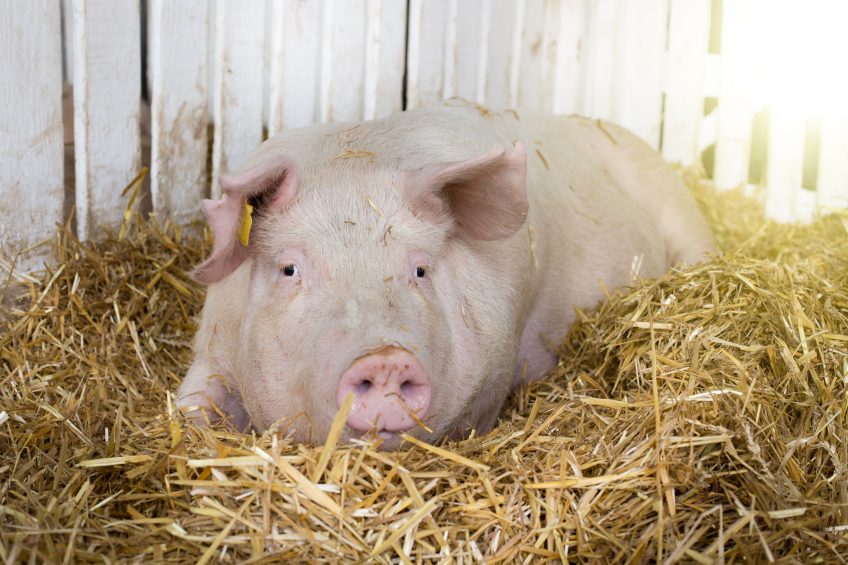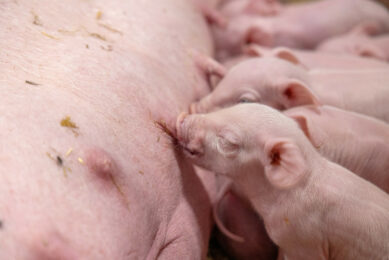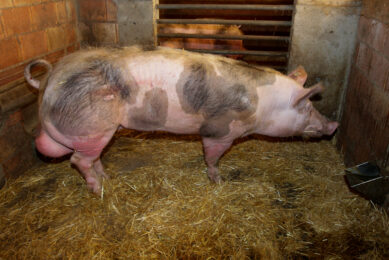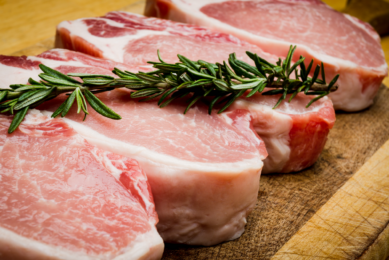Heat stress series: A genetic view on heat stress in breeding

In this series, every author looks at the problem of ‘heat stress’ from a different angle. In Pig Progress, issue 33.07, veterinarian Steve McOrist considered a veterinarian approach of the issue. In this article, it is time for a genetic approach. How can heat stress be alleviated by choosing the right breeds?
Heat resistance in pigs can be defined as the ability of an animal to develop thermoregulatory responses to mitigate the effects of heat stress on its physiological system. It can alternatively be viewed as the ability of a pig to maintain its production level under thermal stress. Three types of heat stress may occur in pig farming systems:
• Chronic heat stress encountered in warm climates such as intertropical countries;
• Short-term heat stress during two or three summer months in temperate areas;
• Acute heat-stress as it occurs during days of heat waves.
The animal responses to heat stress vary according to the duration and the intensity of the thermal challenge. Heat stress alters several metabolic processes which adversely affect pig performance, health and welfare and thus reduce the economic viability of pig farming. There are many reasons for considering heat stress in future pig breeding programmes.
The global market
Pig breeding is more and more an international business, with major breeding organisations providing genotypes in several types of production environments. Furthermore, more than 50% of pig production takes place in warm climates, such as South America, South and East Asia, with the prediction of faster growth in the future than in temperate areas.
Increased sensitivity
There is a growing body of evidence that selection for increased production and reproduction traits has reduced the environmental flexibility of pigs.
Genetic variability of heat stress
Several studies have shown the existence of a genetic variability for heat tolerance both between and within pig populations, so that there is room for genetic improvement of heat tolerance.
Climate change
An increase in global average temperature is expected to increase in the next decades, which will accentuate heat stress related problems in both hot and temperate areas.
Breeding goals for heat tolerance
In terms of general breeding strategy, the most common approach for selecting pigs in heterogeneous environments is to use standard breeding goals and criteria. Using this approach, the most relevant strategy will strongly depend on the level of genotype-by-environment interactions (GxE) for traits of interest.
If GxE interactions are low to moderate, selecting for robust animals that are able to perform well in the different production environments is likely to be the most relevant choice, as it allows a limited number of large populations to be selected. On the opposite side, with strong GxE interactions, the hierarchy of breeding values is likely to be modified, so that a good candidate in one environment may turn out to be worse in another environment. In such a case, the selection of specific pig populations well adapted to the different types of production environments is likely to be the strategy of choice. Yet, it should be emphasised that this strategy leads to an increase in the number of populations and a reduction in the size of each population, which might affect selection intensities and efficiency.
Use of new phenotypes
An alternative or complementary strategy is the use of ‘new phenotypes’ such as thermoregulatory response indicators, which would be combined with standard traits in a global index, taking into account production efficiency and adaptation to heat stress. Among traits that could be of interest, some are indicators of the total thermoregulation process, such as rectal temperature, or traits related to heat dissipation, such as respiratory rate or skin temperature.
More complex traits, such as the time necessary to return to normal rectal or skin temperature or respiratory rate, which are indicators of resilience, could also be of interest, but such traits require continuous, high throughput, measurements using probes. The inheritance of traits directly related with thermoregulatory responses is still poorly known. INRA studies on tropical data from Large White lactating sows showed that thermoregulatory responses such as rectal temperature or respiratory rate are lowly to moderately heritable, suggesting that selecting for a better thermoregulation is possible. Lower heritability values were obtained in growing pigs. Nevertheless, the genetic correlations with production traits such as sow daily feed intake, litter growth rate or feed efficiency were low.
To our knowledge, there is no practical commercial breeding program that includes thermoregulation traits in the selection index. The inclusion of such traits in conventional breeding schemes is not easy because of the complexity to estimate the economic weight to put in the breeding index for such type of the trait. For instance, what is the financial cost of a decrease of ten breaths per minute of the standard deviation of respiratory rate of lactating sows? Nevertheless, thermoregulation traits could be included as criteria of selection to improve the prediction without having economic weights.
Genomic tools
Genomic tools are being increasingly used in pig breeding schemes with the development of marker assisted or genomic selection. These new tools make it possible to identify chromosomal regions associated with variations in heat tolerance, paving the way for genomic based selection for both performance and heat tolerance traits. For instance, a simple option would be to use SNP associated with thermotolerance to select heat tolerant sires among the candidates with high breeding values for production. The implementation of this alternative requires a good reference population in order to insure the accuracy of genomic breeding values and low genotyping costs to achieve the economic efficiency of the scheme.
Functional genomic research studies on the physiological mechanisms underlying heat tolerance in pigs could contribute to identify new phenotypes. A research programme is currently performed in this field, using an experimental back-cross design between a tropical heat-adapted pig breed, the Creole pig breed and the European Large White breed.
Breeding schemes
Genetic improvement programmes for heat tolerance can be addressed either through genetic selection or crossbreeding or both. For instance, the heat tolerance of local tropical breeds can contribute to improve heat tolerance in a mainstream commercial line or breed (by crossbreeding or by introgressing ‘heat adaptation’ genes). Little has been published on this topic in pigs, but there are some success stories in beef cattle reared in tropical countries. Many native pig breeds are located in tropical areas, but many of them are poorly characterised. It is necessary to implement breeding programmes for the conservation and improvement of these locally heat-adapted breeds.
A complex issue
Breeding for heat tolerance traits in pigs is a complex issue. Selecting animals with high-production level under heat stress can be achieved with success in different ways. It is important to note that there are other aspects that could interact with breeding for heat tolerance such as disease resistance, feed efficiency, purebreds-crossbred interactions. Additional research is still required to better understand:
• The genetic determinism of heat tolerance;
• The level of GxE interactions of economically important traits;
• The physiological mechanism underlying heat tolerance.
These topics (structural and functional genomics) are likely to feed each other in close future.
This article is a second in the heat stress series, which has been made in cooperation with Animine.











